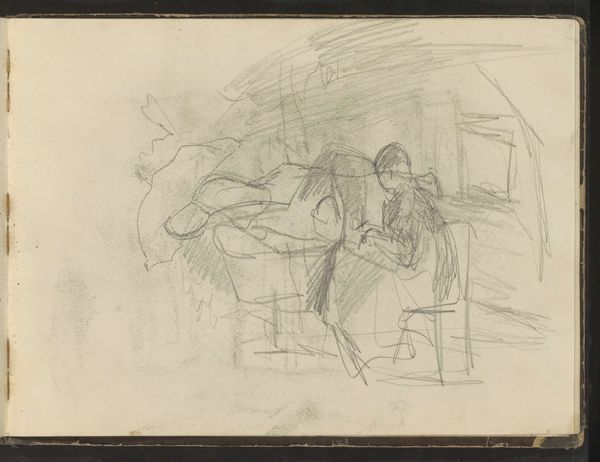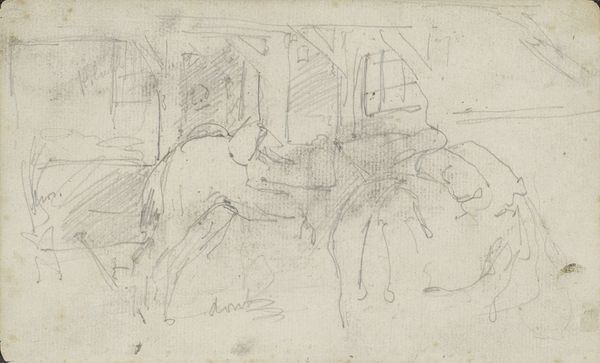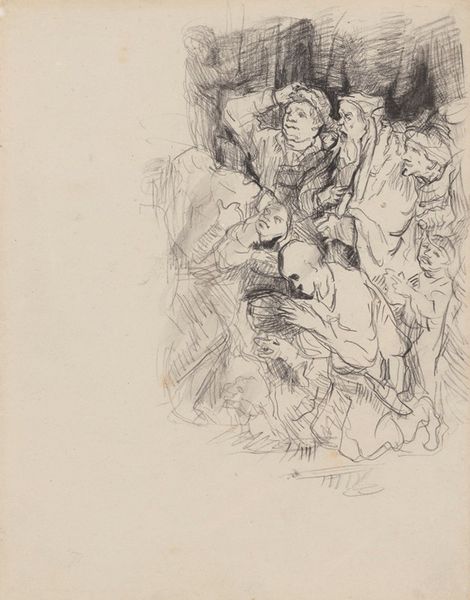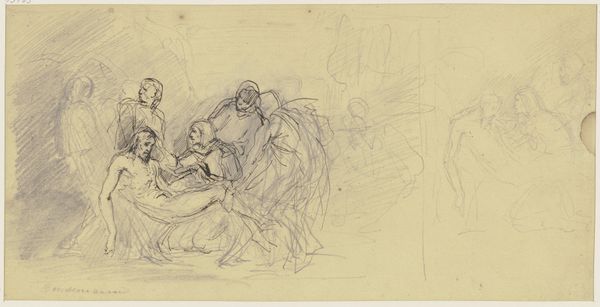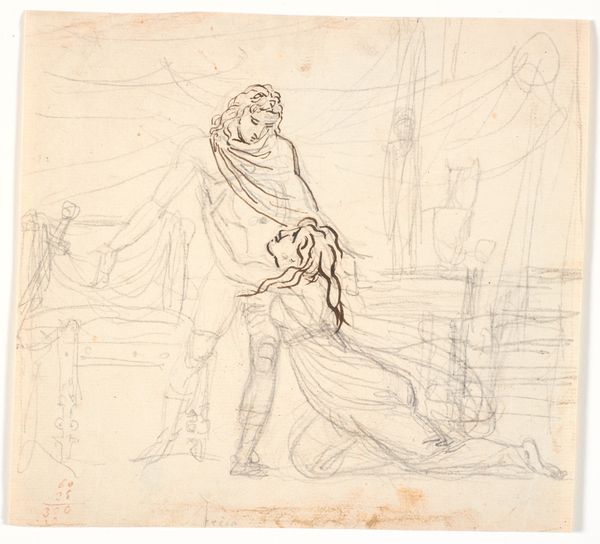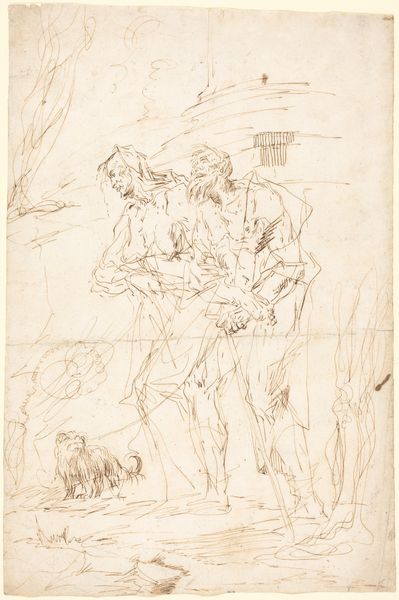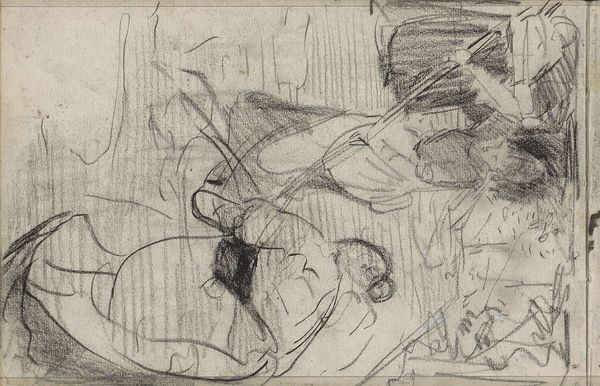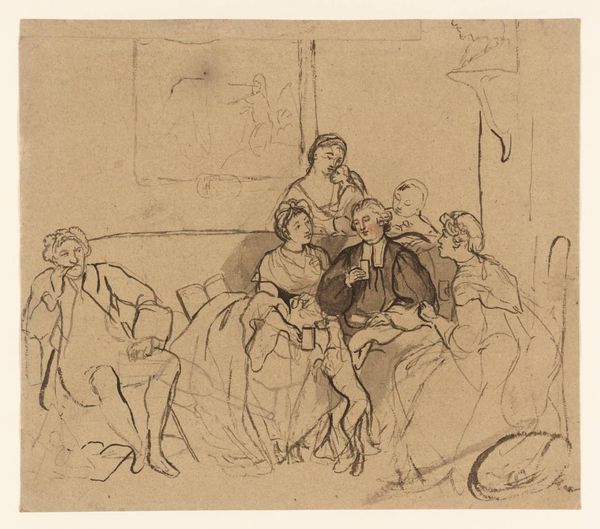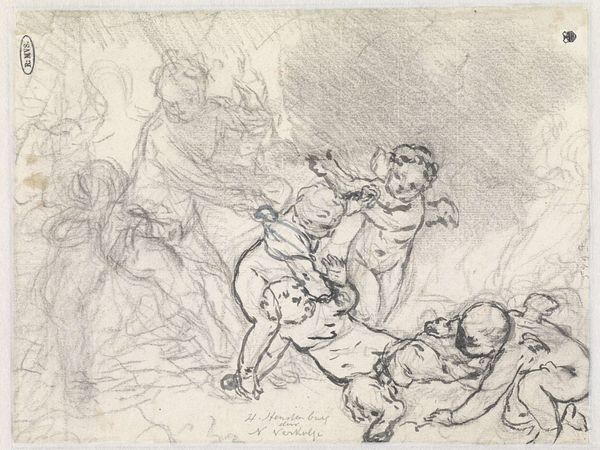
drawing, pencil
#
portrait
#
drawing
#
narrative-art
#
figuration
#
romanticism
#
pencil
#
history-painting
Copyright: Public Domain: Artvee
Editor: This is Eugène Delacroix's pencil drawing, "Woman Dying, Man in Bedroom, Two Sketches of Same." The subject matter feels intimate and heavy, focusing on what looks like a final moment. I’m struck by the vulnerability conveyed through these quick, yet emotionally charged, lines. What do you see in this piece? Curator: This work invites us to consider the power dynamics inherent in representations of death and mourning, especially in 19th-century art. Who has the power to represent grief, and whose stories are being told? How are women's bodies historically positioned in these narratives of suffering? Delacroix often explored themes of suffering in his work, connecting with broader social concerns. Do you think this depiction could offer insight into how gender roles were negotiated during illness in this historical moment? Editor: That's a good question. I hadn't thought about it that way. It makes me think about who is comforting whom and who has agency in the scene. Is the man the only one with agency, merely by standing by? Curator: Exactly. And agency over whose story? Consider how the Romantic movement often glorified suffering, but through whose gaze? Often through a masculine lens. So we might ask ourselves if Delacroix is merely aestheticizing suffering or offering something more complex in terms of empathy. Can a male artist truly represent the lived experience of a dying woman? It's crucial to analyze art within the broader societal context of gender and power. Editor: That's fascinating. Thinking about the broader social implications gives this piece a new level of depth that I had not noticed before. Curator: Absolutely. Art is not created in a vacuum, and acknowledging the historical, political and social conditions enhances our appreciation for it. Considering whose perspective we're viewing this from truly changes our understanding. Editor: Thanks, I have a much clearer idea of where Delacroix's narrative-art fits within a broader cultural discourse now.
Comments
No comments
Be the first to comment and join the conversation on the ultimate creative platform.
